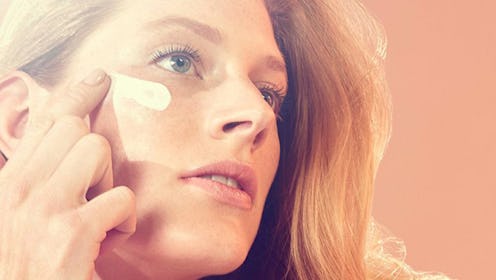
As a company, cosmetics brand L'Oreal remains on the cutting edge when it comes to research and development of its products. The company has already sworn not to test on animal, and now L'Oreal is using 3D printers that mimic human skin as a testing ground for new products. Ladies and gentlemen, this is the future.
It's high tech stuff, at least to my civilian brain, but at least it keeps animals out of the process and if its efficacy is as hoped for, it could eliminate animal testing for the entire industry, according to Allure. That's even better news. Other sources suggest such research and technology could eventually help burn victims, too.
Breaking down the boring science into digestible parts, here's the rub. L'Oreal is partnering with bio-engineering firm Organovo, the latter of which both designs and creates "multicellular, dynamic, and functional human tissues for use in drug discovery and medical research," according to Allure. Together, they will craft tissue that is similar to human skin, which leads to faster, easier, and totally humane testing methods.
Cool, right? But how, exactly, does this work?
Allure spoke to Guive Balooch at L'Oreal, who noted that the process employes bio-ink, which is comprised of human cells. Before you start shaking your finger over the use of human sources, keep in mind that, according to the BBC, they're collected from biopsies, from donations from plastic surgery patients, and from stem cell sources.
Software is then introduced into the equation, making use of the bio-ink. Balooch told Allure, "The tissue is printed into a matrix, where co-printed gel holds the form or negative spaces needed in the printing process but is removed within 24 hours, leaving behind a 100 percent cellular tissue."
That's a little sci fi for my taste, but the end result is that the tissue is cellular without synthetic structures, so it is as similar to "the behavior of the cells and tissues in their natural environment without foreign material," according to Balooch.So, why does that matter to you, the consumer? Let's break it down.
1. Ethics
If you are vehemently against animal testing, this methodology is humane and ethical, keeping all those lab rats out of it.
2. Better & Faster
This method could get new and exciting products to market and to you in better, faster fashion.
3. Tech Head
We live in such a digital world, so to see this type of science and technology utilized by the beauty world is refreshing, proving there's more to makeup than pretty lipstick.
The BBC reports that time will tell how this skin printing will actually effect the beauty industry.
Adam Friedmann, a consultant dermatologist, said, "I think the science behind it, using 3D printing methods with human cells, sounds plausible. I can understand why you would do it for severe burns or trauma but I have no idea what the cosmetic industry will do with it."
Well, let's see what L'Oreal comes up with on the consumer and perhaps even burn victim front. Allure noted that L'Oreal has been conducting research on skin cultivated from post-plastic surgery tissue for a while and has even sold some of the skin to other areas of science. Pretty cool, if you ask me.
Images: @lorealparisusa/Instagram (1); Giphy (4)